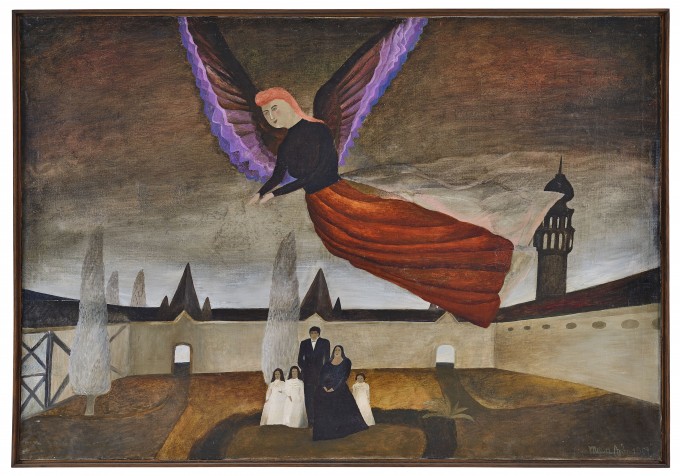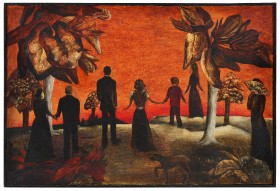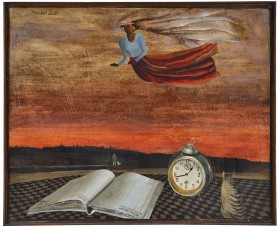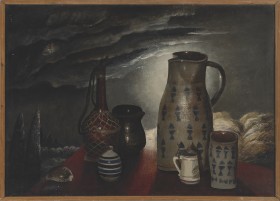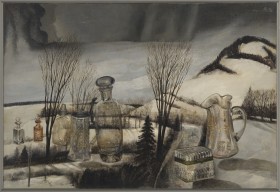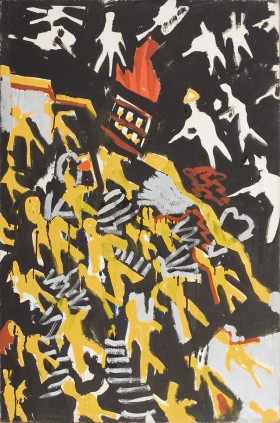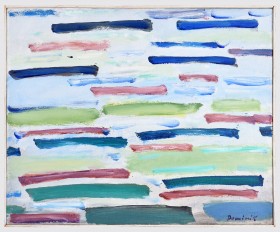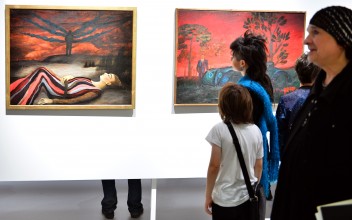The Return
- type of object: painting
- date: 1967
- material/technique: oil on canvas
- dimensions: 90 x 130 cm
- inventory No.: M-1
Maria Anto created portraits, landscapes, still lifes and allegorical scenes, combining various painting genres in her works, such as landscapes with group portraits, or still lifes with landscapes. The Return was painted shortly after the artist made her debut to the enthusiastic acclaim of the public and art critics. The originality of Anto’s painting, which was part of the post-war figuration trend, is based, among others, on the free use of perspective, drawing inspiration from the world of fantasy and imagination, mixing temporal orders, referencing old and naïve art, as well as motifs drawn from various iconographic sources. At the same time, the artist has evoked elements of her own biography in her works, which makes her art a complex self-portrait.
The painting The Return references the artist’s personal life. Using a convention resembling old-time family photographs, Anto has painted a portrait of herself and her loved ones in elegant clothing, anachronistic to the time of the portrait’s creation. The woman-mother, heavily pregnant is accompanied by her husband-father and three children. In 1967, Maria Anto had two young daughters — Krystyna and Zuzanna. The third child of the artist and her then husband Jan — Edward — was born in 1967. The Return was probably painted before her son’s birth, but the artist painted her third child on her left side, at the same time depicting herself as pregnant, thus upsetting the flow of events in her own life. Anto created imaginary portraits of her children a few years earlier, in the early 1960s — before Zuzanna’s birth — which makes this interpretation likely. The group portrait is set against the background of architecture of a convent or palace courtyard. Rising above them is a winged figure blessing the group with its hands, serving as the family’s guardian angel, while the eponymous ‘return’ may refer to the artist once again becoming a mother.
Michał Jachuła
translated by Paulina Bożek
